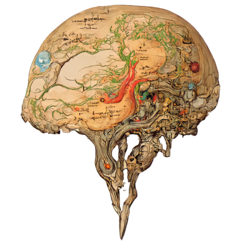MINi lab.

Contact
2500 Boulevard de l'Université, Sherbrooke, QC, J1K 2R1, Canada
Copyright, 2022
The MINi lab focuses on creating medical imaging tools for clinical research. A major effort is put toward the quantification of measurement errors to ensure results are reproducible and conclusions replicable.
Projects mostly involve the processing, visualization, and analysis of diffusion MRI and tractography in the human brain. The investigation of white matter pathways or structural connectomes is the principal area of research. However, our expertise in imaging sciences can be applied or used to investigate other medical imaging modalities (CT, PET, etc.), other species (mice, primates, etc.), or other organs (heart, lungs, etc.).
Our goal is to develop fundamental methods for the next generation of clinical translation and support our clinical collaborators in their research. We believe imaging science will be essential in the future to guide clinical practice.
A key component of our research program is open science: open-source code, data sharing, and transparent research (validation/replication studies, publication of null results, etc.). Another component is the development of skills for both industrial and academic careers to ensure trainees are ready for their life outside/after the research program.